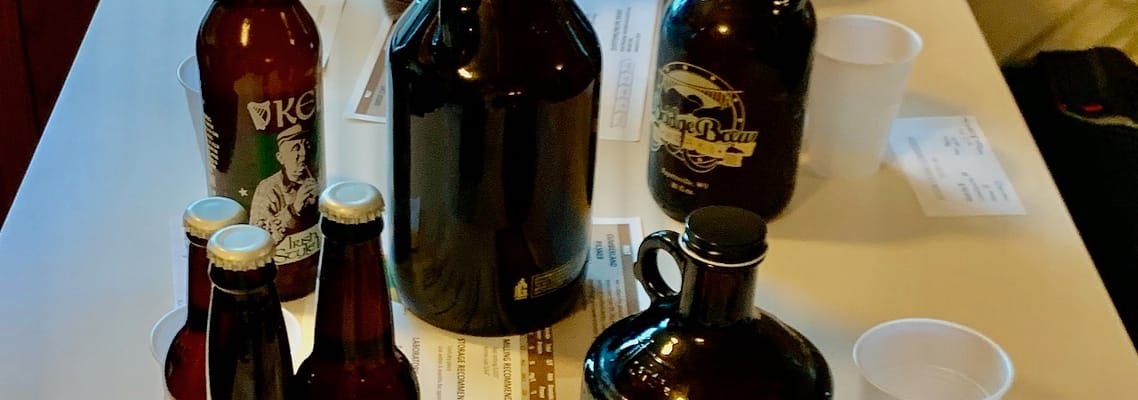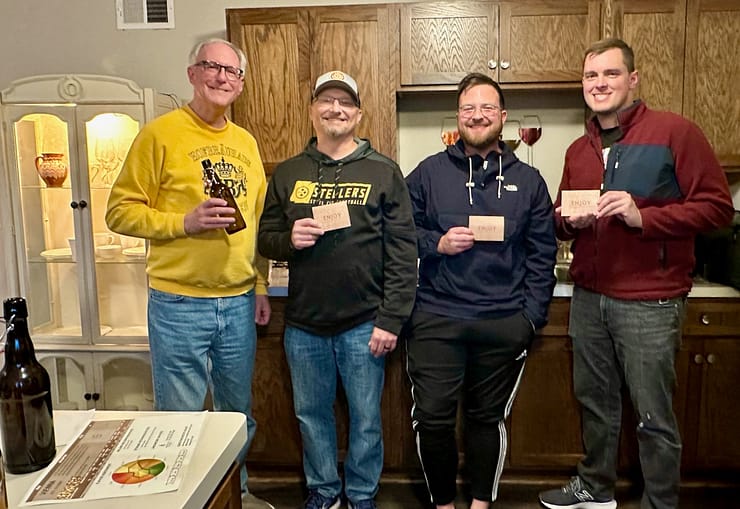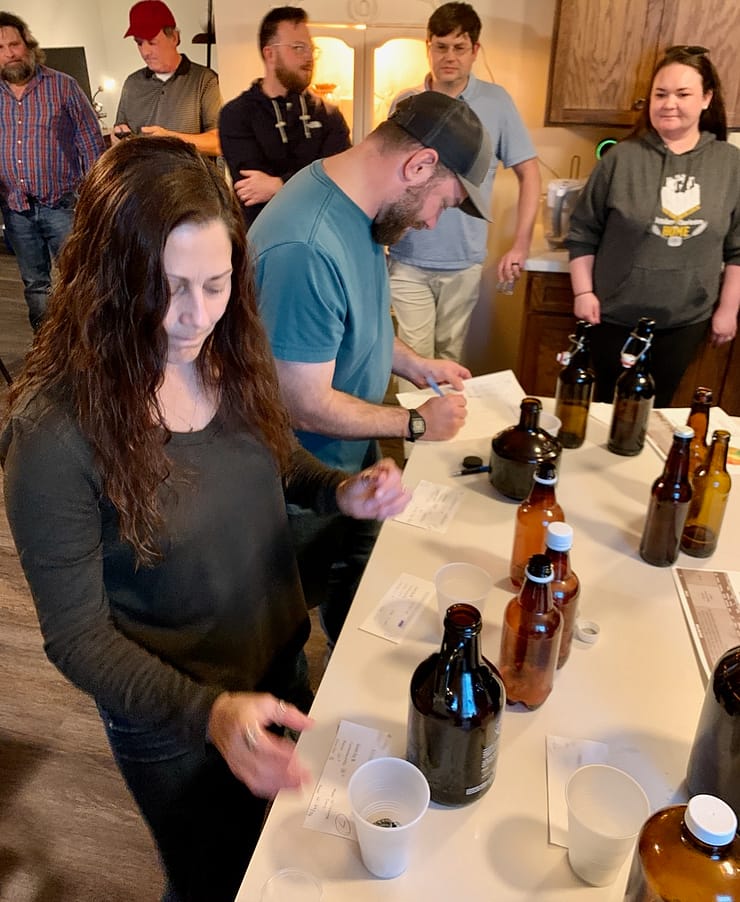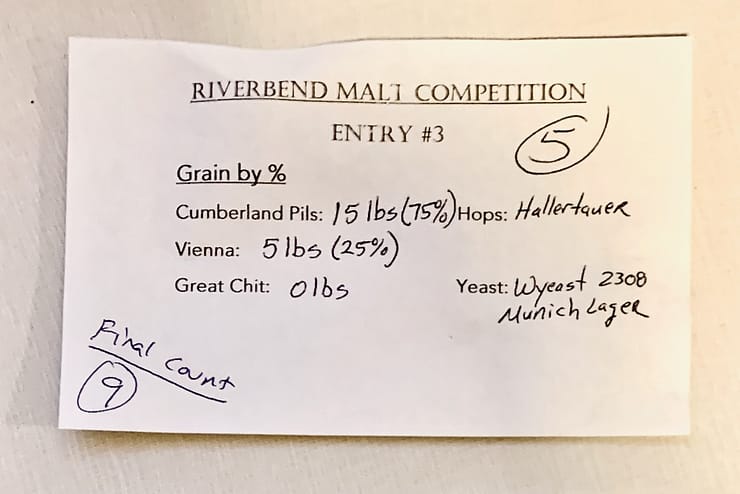
Homebrew club features regional malts
September 30, 2022
The Kanawha Valley Homebrew Club (KVHC) recently completed an exercise in learning to use regionally-sourced craft malts. The exercise ended with a club competition in which 13 brewers competed to see who could make the best beer with craft malts from Riverbend Malt House in Asheville.

Growing respect for malt freshness
As everyone knows, freshness makes a huge difference to flavor in most food ingredients. That is also true for beer brewing ingredients. Something beginning brewers quickly learn is that their hops and yeast work much better if they’re fresh. However, one ingredient in the past where extra freshness wasn’t seen as quite so important was the malt.
Sure, brewers knew that you don’t want to store malt for a couple of years or it would get stale. But what many hadn’t appreciated (because they hadn’t experienced it) was the big flavor impact of freshly malted grain versus one even a few months old.
A growing number of small commercial brewers have grown more appreciative of malt freshness and are now obtaining more of their malts from small craft malt houses based in their regions of the country. Malts from these craft maltsters are often shipped out when they are no more than a week or two old. And it makes a difference.
For homebrewers, however, obtaining ultra-fresh malt is much more rare. Homebrewers, who typically purchase their grains in small quantities from homebrew supply shops, have no control over how fresh the malt is when it arrives to them. The bag of malt from which their order was filled could have been malted many months earlier.
Club competition picks best beer
At the suggestion of this article’s author, members of the Kanawha Valley Homebrew Club in West Virginia recently took on the challenge to learn about using extra-fresh malts sourced from a small, regional craft malt house. Back in the summer, working with Riverbend Malt House in Asheville, the club arranged to receive and distribute to its members (those 13 who signed on to the activity) enough grain for each to make a batch of beer.
Three different malts were made available: Cumberland Pilsner, Vienna, and Great Chit. Participants selected the grain mix they wanted from the three malts. A late September date was set to debut the beers and hold a competition to decide which brewer did the best job featuring local malt in their beer.

On September 30, the club competition took place, and a pale lager brewed by Chis Butler took top honors. Beers by club members Chris Brown and Aaron Silber placed 2nd and 3rd place, respectively. Winners were awarded gift certificates from Breathe Wine & Culture, a local homebrew supply shop in Cross Lanes, WV, and they also received the leftover malt that wasn’t used in the competition.
KVHC President Jedidiah Walkup said club members really enjoyed the activity. “Those who brewed and took advantage of brewing with the provided local malts seemed to enjoy this competition the most. A number of the brewers experienced how great the malts smelled when crushed and tasted during brew days,” Walkup said.
“Our club as a whole delighted in the tasting of the beers the competitors brewed. Overall, I think these were the best beers our club has made, especially considering they were mostly lighter beers which would have not had the capability to disguise off-flavors. I heard many comments about how good these beers were and especially how fun it was to pay attention to the malt profiles as we tasted them. We would love to do a competition like this again.”
Walkup thanked Sam Fonda of Weathered Ground Brewery, Brent Manning of Riverbend Malt House, and Charles Bockway of Brilliant Stream for providing the malts to the club. About the leftover grains that were distributed to the winning brewers as prizes, he said, “The rest of us are envious that they get to brew again in the near future with these quality malts.”

Local malts bring more than freshness
The first thing you hear from brewers who get a bag of fresh malt is about the aroma. When they run the freshly malted grain through their grist mills, they are knocked out by the strength and richness of the beautiful aromas coming from the malt. If you haven’t experienced this, you’re in for a treat when you do. These more intense malt aromas are an indicator of the difference that craft malt can bring to the beer.
Local malts from regional craft maltsters are almost always produced from grain sourced from small farmers in their regions. Due to the climate and latitude differences in the southern half of the U.S., the barley varieties grown by the farmers here have to be different from the ones used by the large barley farms of the upper midwest and Canada, where the grains for the large malt houses come from. These different varieties of southern barley produce malts with a slightly different palate of flavor characteristics.
Getting excited about craft malt
When these different flavor characteristics are combined with the extra malt freshness, the experience of brewing with craft malt creates something brewers can get excited about. It’s a little different.
Sam Fonda, brewer and co-owner at Weathered Ground Brewery, describes it this way. “Freshness and terroir are elements in brewing that should never be overlooked. Freshness, for quality of course. Terroir, if it is important to you that your beer has a sense of place. We like to use Riverbend malts because the grain is grown and malted here regionally and we believe that’s special. And it’s always fresh.”
Fonda says he tastes the difference the most when they use the local craft malts in lagers and lighter beers that let malt flavor shine. “They have a unique house character that we enjoy showcasing in, say, our Cool Ridge Lager or AJ’s Festbier.”
Homebrew clubs a good place to learn
No doubt about it, many of West Virginia’s best brewers do not work at commercial breweries, but are hobbyists who brew their beer at home. Homebrew clubs serve as both a social outlet and training ground for folks who enjoy making beer at home. The majority of brewers at West Virginia commercial breweries began their brewing education as homebrewers.
West Virginia has a number of active homebrew clubs that welcome new members. If you’ve been brewing at home and would like to get better at it, or if you’re a total novice and would like to learn to brew, a local homebrew club can help you.
Here’s a list of West Virginia’s homebrew clubs that have Facebook pages making it easy to check them out.
Kanawha Valley Homebrew Club, Charleston
Appalachian Brew Club, Elkins
Appalachian Alchemist, Beckley
Greater Huntington Homebrewers Association
Morgantown Area Society of Homebrewers
Harrison County Homebrews Club, Clarksburg

